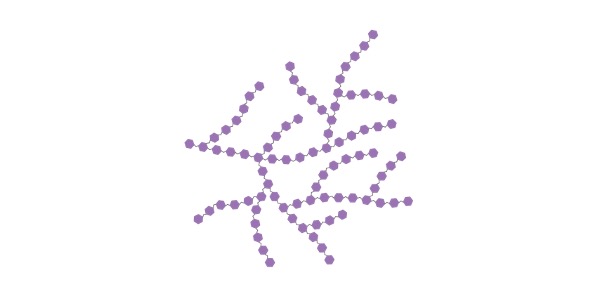Table of Contents
Human Digestive System
Digestive Enzymes
The complex foods that we eat are digested in a series of steps beginning in the mouth itself. Each of these complex food items ends up being catabolized to its basic monomeric units in a complex process. For instance, the ingested steak pieces are broken down to the amino acid level and ingested carbohydrates release glucose.
Mouth
The food is broken down physically and emasculated by the chewing activity of the teeth that also helps to mix the food with saliva. Saliva contains salivary amylase or ptyalin and is produced by the salivary glands. This enzyme helps to maintain the alkaline pH of the mouth and it acts on starch and breaks it down to maltose, so carbohydrate digestion starts in the mouth. The leftover starch is digested in the stomach and duodenum.

The food after it is mixed with saliva is termed bolus. This is then passed through the food pipe or esophagus by peristalsis that refers to waves of contraction. Due to this movement bolus reaches the stomach via the cardiac sphincter that prevents reflux or regurgitation of food.
Stomach
Gastrin is a hormone that is released in the bloodstream when it detects peptides in the stomach. It stimulates the gastric glands located in the stomach wall to secrete gastric juice that is acidic. Its components include renin, HCl acid, gelatinase, pepsinogen, gastric lipase, and gastric amylase.
HCl is responsible for acidic pH ranging from 1-3 in the stomach. This acidic pH helps to kill any pathogen present and also helps in the conversion of pepsinogen into a more active form of pepsin. Pepsin digests proteins present in the stomach to peptide fragments.
Renin enzyme is crucial in the digestion and proteolysis of milk proteins. Gelatinase enzyme aids in the digestion of proteoglycans in meat ( type IV and V collagen) and type I and type V gelatin.
Gastric amylase helps continue starch digestion and acts on undigested starch. Gastric lipase enzyme is involved in the digestion of butterfat into glycerol and fatty acids. After all these processes, the food is now termed chyme and it is passed into the duodenum via the pyloric sphincter.
Duodenum
Duodenal glands are constituted by Brunner’s Glands found throughout the duodenum. These gland secretions help in making the duodenum pH alkaline containing bicarbonate ions. This alkaline pH is essential to activate intestinal enzymes, protect walls of the duodenum from chyme that is acidic, and lubricate the walls.
The 3 intestinal juices secreted in the duodenum include Pancreatic Juice, Intestinal Juice, and Bile Juice. Bile juice reaches the duodenum through the bile duct after it is secreted by the gall bladder. It aids in the emulsification of fats as it contains bile salts. Fats are emulsified into globules that are acted on by enzyme lipase present in the pancreatic juice.
The pancreas secretes pancreatic juice that reached the duodenum via the pancreatic duct that opens into the duodenum. This juice contains different enzymes including chymotrypsin, steapsin, carboxypolypeptidase, pancreatic amylase, and trypsinogen.
The Enterokinase enzyme in the intestinal juice activates trypsinogen converting it into trypsin that acts on proteins. Pancreatic Lipase or steapsin digests fats into glycerol and fatty acids. Enzyme carboxypolypeptidase acts on peptides and breaks them into amino acids. Pancreatic amylase acts on starch.
The glands on intestinal walls secrete intestinal juice that contains eripsin, enterokinase, maltase, lactase, and sucrase. Eripsin breaks polypeptides into individual amino acids. Maltase enzyme breaks down Maltose to glucose. Sucrase catalysis sucrose into glucose and fructose. The lactase enzyme breaks lactose into glucose and galactose.
Ilium
Fingerlike extensions line the ilium walls and are known as villi that are in turn made of microvilli. Due to these projections, the surface area of the ilium is increased. The most important function of the ilium wall is to absorption of products of digestion, vitamin B12, and bile salts. Ilium wall cells do secrete carbohydrase and protease that help to culminate carbohydrate and protein digestions.
The villi are enriched with capillaries that help in the absorption of the amino acids and glucose via the hepatic portal vein to the liver. Small lymph vessels known as lacteals occur in villi. They aid in the absorption of fat digestion products. These lacteals transport these to the lymphatic system for purpose of filtering.
Large Intestine
The large intestine functions to absorb excess water, storing waste, absorbing vitamins like vitamin K and maintaining water balance. It includes the cecum, colon, rectum, and anal canal. Colon acts to absorb excess water present in feces. Feces are temporarily stored within the rectum ampulla. The desire to defecate arises from the stimulation of stretch receptors due to the expansion of rectal walls.
If the urge is controlled, then material returns to the colon where excess water is again absorbed. Constipation can occur if defecation is delayed for long and it can also cause feces to harden. From the rectum, the feces are passed onto the anal canal from where they are removed by the anus.
Nucleotide Citations
- Aquaporins in the digestive system. Med Electron Microsc . 2004 Jun;37(2):71-80.
- Roles of Na +/Ca 2+ exchanger 1 in digestive system physiology and pathophysiology. World J Gastroenterol . 2019 Jan 21;25(3):287-299.
- Structure and function of the digestive system in molluscs. Cell Tissue Res . 2019 Sep;377(3):475-503.
- The digestive system of xenacoelomorphs. Cell Tissue Res . 2019 Sep;377(3):369-382.
- The digestive system: linking theory and practice. Br J Nurs . 1997 Dec 11-1998 Jan 7;6(22):1285-91.
- Figures are created with BioRender.com







